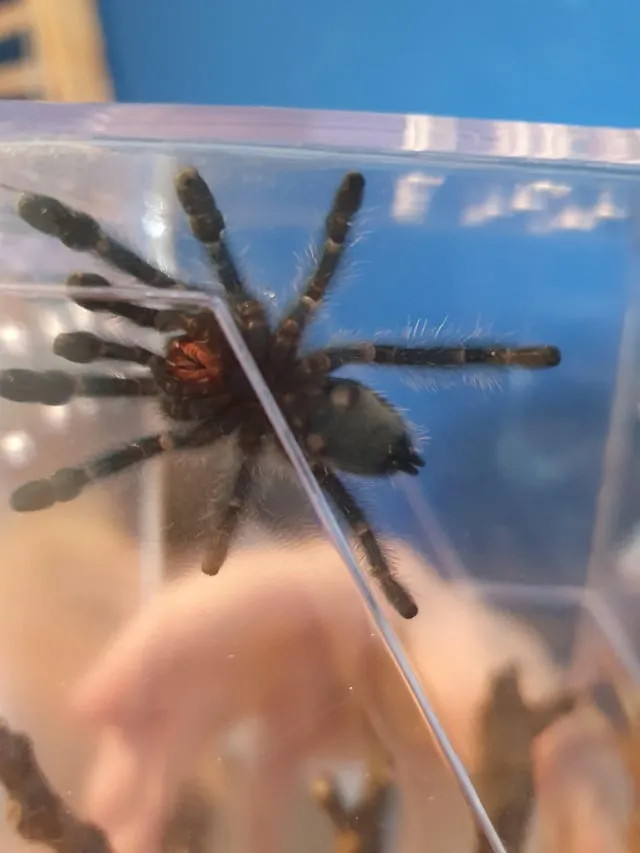Understanding the Versicolor Tarantula (Caribena versicolor)
The Versicolor Tarantula, scientifically known as Caribena versicolor, is a captivating arboreal species that has gained immense popularity among tarantula enthusiasts. Native to the Caribbean islands, particularly Martinique, these spiders are renowned for their striking colors and relatively docile temperament, making them a fantastic choice for both novice and experienced keepers. Understanding their natural habitat and needs is the first step in providing optimal versicolor tarantula care and ensuring their well-being. This comprehensive guide delves into every aspect of caring for these beautiful creatures, from habitat setup and feeding to health considerations and breeding, providing you with the knowledge to help your versicolor tarantula thrive.
Appearance and Characteristics
One of the most alluring aspects of the Versicolor Tarantula is its stunning appearance. Spiderlings often start with a vibrant blue coloration, gradually transitioning through hues of pink, red, and green as they mature, ultimately becoming a breathtaking mosaic of colors. Adults display a metallic green carapace and vibrant blue legs, accented by pink or red hairs on their abdomen. Their size is moderate, with females typically reaching a leg span of up to 6 inches, while males are usually slightly smaller. The contrast of colors and the delicate patterns make them a true spectacle in any collection, adding to their appeal as a pet. Their arboreal nature means they are well-adapted for climbing and often display a graceful demeanor when moving around their enclosure.
Temperament and Behavior
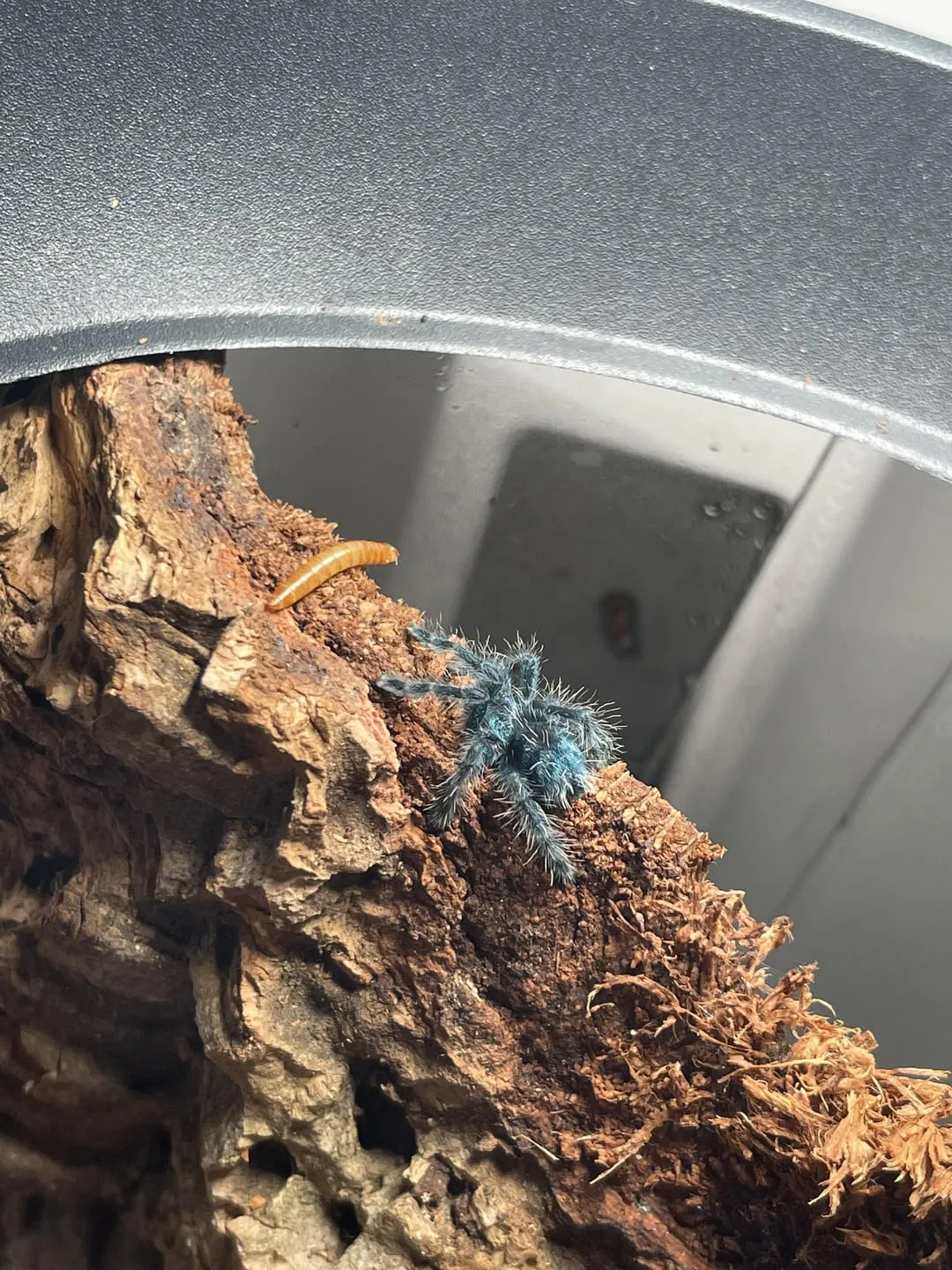
Versicolor Tarantulas are generally known for their relatively docile and non-aggressive nature, which is a significant advantage for keepers of all experience levels. While individual personalities can vary, they are less likely to exhibit defensive behaviors like biting or kicking urticating hairs compared to some other tarantula species. They are generally calm and prefer to retreat into hiding when disturbed. However, it is essential to remember that they are still wild animals and should be handled with respect and caution. Their temperament makes them easier to observe and admire, allowing keepers to appreciate their behaviors, such as web-spinning and hunting, without constant worry. Always observe the tarantula’s body language for signs of stress before any interaction.
Creating the Perfect Versicolor Tarantula Habitat
Providing a suitable habitat is paramount to the health and happiness of your Versicolor Tarantula. As arboreal spiders, they require a vertically oriented enclosure that allows them to climb and explore. The ideal habitat mimics their natural environment, providing the necessary elements for them to thrive. From enclosure size and substrate selection to temperature and humidity control, every detail contributes to a comfortable and enriching environment. A well-designed habitat not only supports their physical well-being but also stimulates their natural behaviors, adding to the overall enjoyment of keeping these beautiful creatures. It is vital to research and understand the specific needs of your tarantula to create the best possible home for it.
Enclosure Size and Type
When choosing an enclosure for your Versicolor Tarantula, size and ventilation are critical considerations. A good starting point for an adult is a terrarium that is at least 12x12x18 inches (length x width x height), but larger is always better. The height is especially important, as these spiders are arboreal and need space to climb and web. The enclosure should be made of clear material, such as glass or acrylic, to allow for easy viewing. Proper ventilation is also essential to prevent the build-up of humidity and the growth of mold. The enclosure should have ventilation holes on the top and sides, ensuring good airflow without compromising humidity levels. A secure lid is also essential to prevent escapes, which can be a hazard to both the tarantula and your household.
Substrate Selection
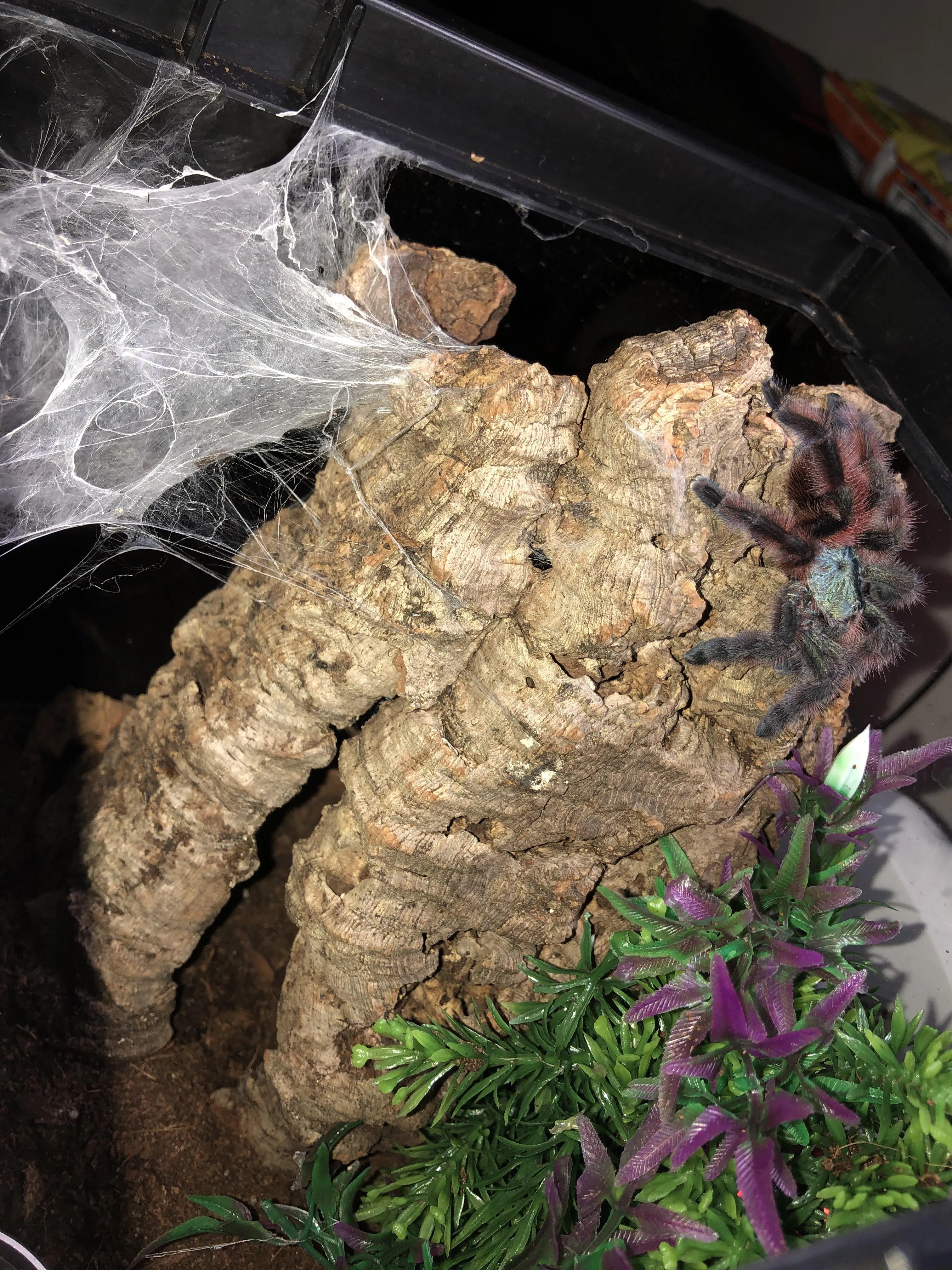
The substrate serves as the floor of your tarantula’s enclosure and plays a crucial role in maintaining humidity and providing a comfortable environment. For Versicolor Tarantulas, a substrate that retains moisture but also allows for proper drainage is ideal. A good mix includes a combination of materials like coconut fiber, peat moss, and sphagnum moss. Coconut fiber is excellent for moisture retention, while peat moss adds acidity and helps prevent mold growth. Sphagnum moss can be added on top to help maintain humidity. Avoid substrates like sand or gravel, as they do not retain moisture well and can be difficult for the tarantula to navigate. The substrate layer should be deep enough to allow the tarantula to burrow slightly if it chooses, typically about 2-3 inches deep.
Decorating the Habitat
Decorating the enclosure enhances the aesthetic appeal and provides essential enrichment for your Versicolor Tarantula. As arboreal spiders, they appreciate climbing opportunities and places to web. Include branches, cork bark, and artificial or live plants to create a naturalistic environment. Secure the decorations firmly to prevent them from falling and harming the tarantula. Live plants, such as pothos or small ferns, can help maintain humidity and add a touch of natural beauty, but ensure they are non-toxic and free of pesticides. Cork bark tubes or half-rounds offer excellent hiding spots, allowing your tarantula to feel secure. A shallow water dish is also a must-have, ensuring your tarantula has access to fresh water at all times.
Temperature and Humidity
Maintaining the correct temperature and humidity levels is crucial for the health of your Versicolor Tarantula. These spiders thrive in a temperature range of 75-85°F (24-29°C). A heat lamp or a ceramic heat emitter can be used to maintain the temperature, but it is crucial to avoid direct contact with the tarantula and to provide a temperature gradient within the enclosure. Humidity should be kept between 65-75%. Regular misting with a spray bottle, typically every other day, can help maintain the necessary humidity levels. Monitoring both temperature and humidity with a digital thermometer/hygrometer is essential for ensuring the environment remains within the optimal range. Proper ventilation, as previously mentioned, is critical in preventing the build-up of excessive humidity, which can lead to health issues.
Feeding Your Versicolor Tarantula
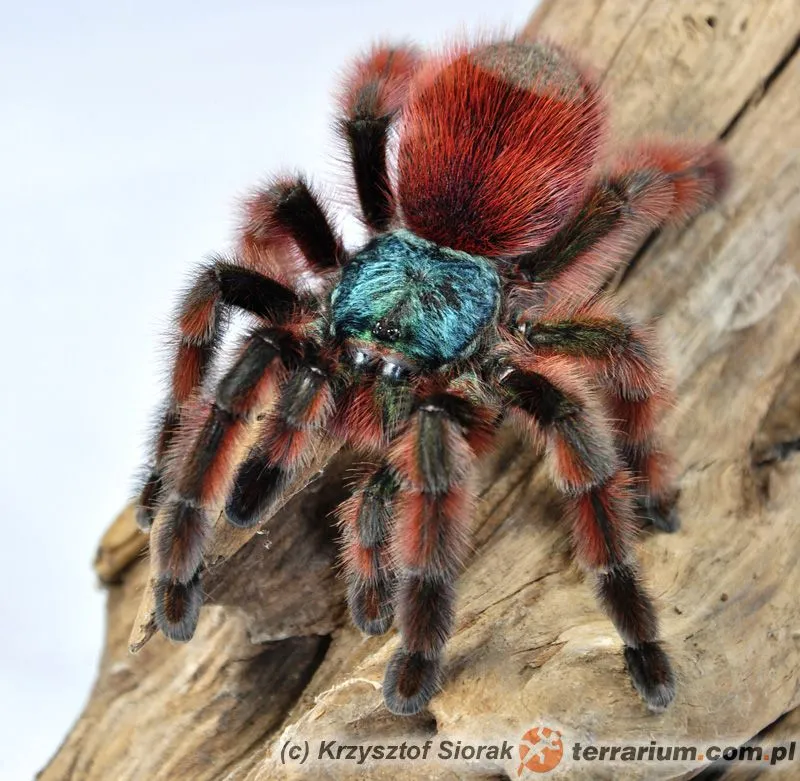
Feeding your Versicolor Tarantula correctly is vital for its health, growth, and overall well-being. They are opportunistic feeders in the wild, and their dietary needs can be easily met in captivity with the right choices. Understanding their feeding habits, the types of food they eat, and the frequency of feeding will help you provide the best possible care for your tarantula. Always ensure that the food items are appropriately sized and that your tarantula has access to fresh water at all times. Overfeeding can lead to health problems, so a balanced approach to diet is key to a healthy, thriving tarantula.
What to Feed
Versicolor Tarantulas primarily eat insects, and a varied diet is essential to ensure they receive all the necessary nutrients. Crickets, roaches, mealworms, and other commercially available insects are all suitable options. Always ensure that the insects are gut-loaded before feeding them to your tarantula, which involves feeding the insects a nutritious diet to enhance their nutritional value. Avoid feeding wild-caught insects, as they may carry parasites or pesticides that can harm your tarantula. The size of the insects should be appropriate for the size of your tarantula; a general rule is that the prey should be no larger than the tarantula’s body. Remove any uneaten prey within 24 hours to prevent stress and mold growth.
Feeding Frequency and Schedule
The feeding frequency for a Versicolor Tarantula varies depending on its age and size. Spiderlings should be fed more frequently, typically 2-3 times per week, while adult tarantulas can be fed once a week or even less often. Observe your tarantula’s abdomen; if it appears plump, it is well-fed. If it’s thin or showing signs of hunger, increase the feeding frequency. Always provide fresh water in a shallow dish. Adjust the feeding schedule as needed, and remember that tarantulas can go for extended periods without food, especially before molting. It’s best to err on the side of caution and avoid overfeeding, which can lead to health complications.
Watering and Hydration
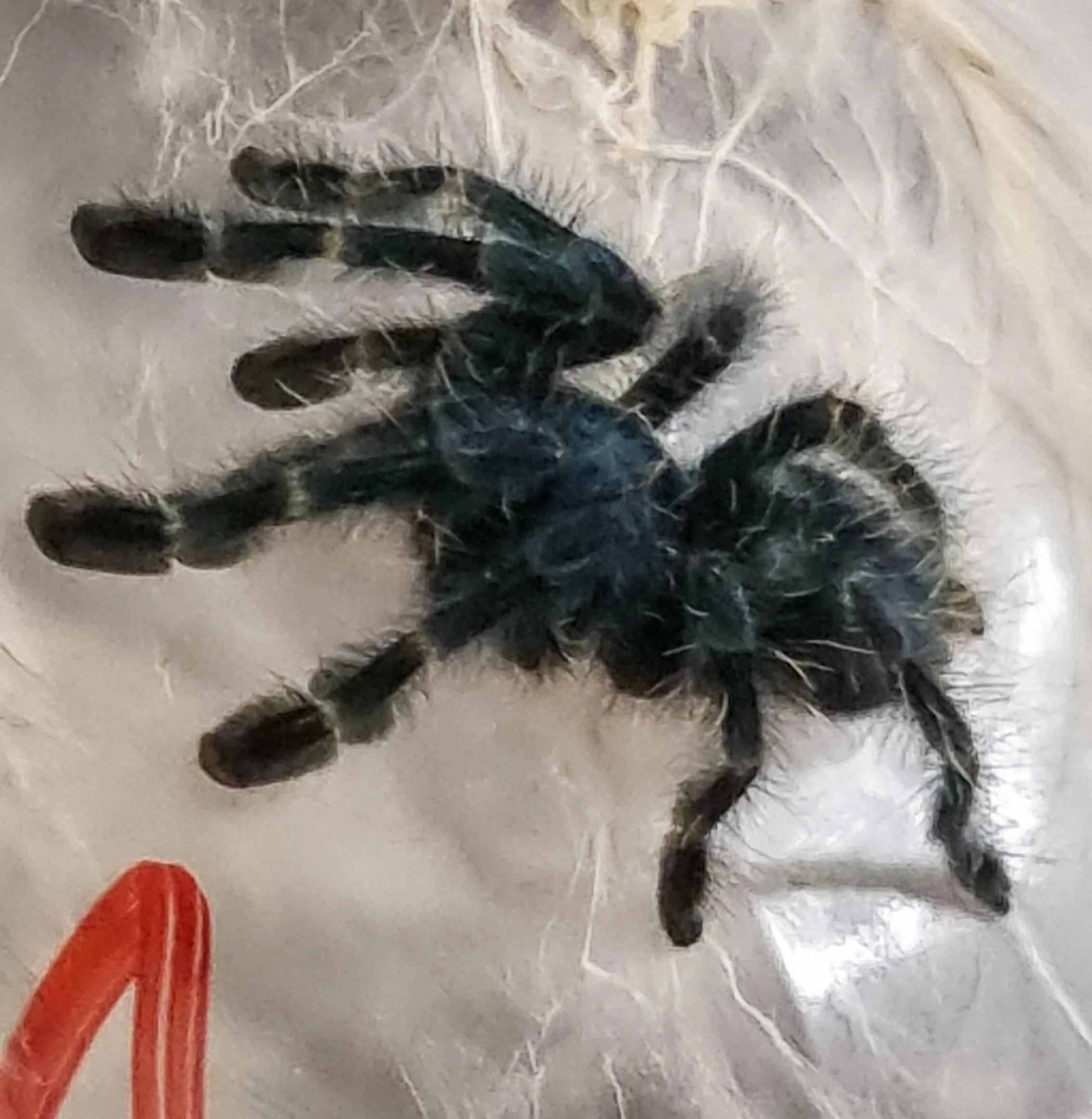
Providing access to fresh water is crucial for the hydration of your Versicolor Tarantula. A shallow water dish should always be available and refilled with fresh, clean water. The dish should be small enough to prevent the tarantula from drowning, but large enough for it to easily access the water. Alternatively, misting the enclosure can also provide hydration, particularly for spiderlings. Misting should be done lightly, avoiding oversaturation of the substrate, which can lead to mold and other issues. Regular monitoring of the water dish and the tarantula’s overall hydration is essential to ensuring its health and well-being.
Versicolor Tarantula Health and Common Issues
Understanding the common health issues and the molting process is critical for the responsible care of your Versicolor Tarantula. While these spiders are generally hardy, they can be susceptible to certain health problems if their environment is not properly maintained. Recognizing the signs of illness and knowing how to address them promptly will help ensure your tarantula lives a long and healthy life. Regular observation and proactive care are key to preventing and managing any potential health concerns.
Molting Process
Molting is a natural and essential process for tarantulas as they grow. During molting, the tarantula sheds its exoskeleton to allow for growth. Before molting, the tarantula may stop eating, become lethargic, and often create a web mat to prepare for the process. The spider will usually flip onto its back to molt. The molting process can take several hours, and it is crucial not to disturb the tarantula during this vulnerable time. After molting, the tarantula’s new exoskeleton will be soft and vulnerable, so it should not be fed for several days until the new exoskeleton hardens. Providing adequate humidity during this time is also essential to ensure a successful molt. Observe the tarantula carefully for signs of distress or difficulty molting.
Recognizing and Treating Common Ailments
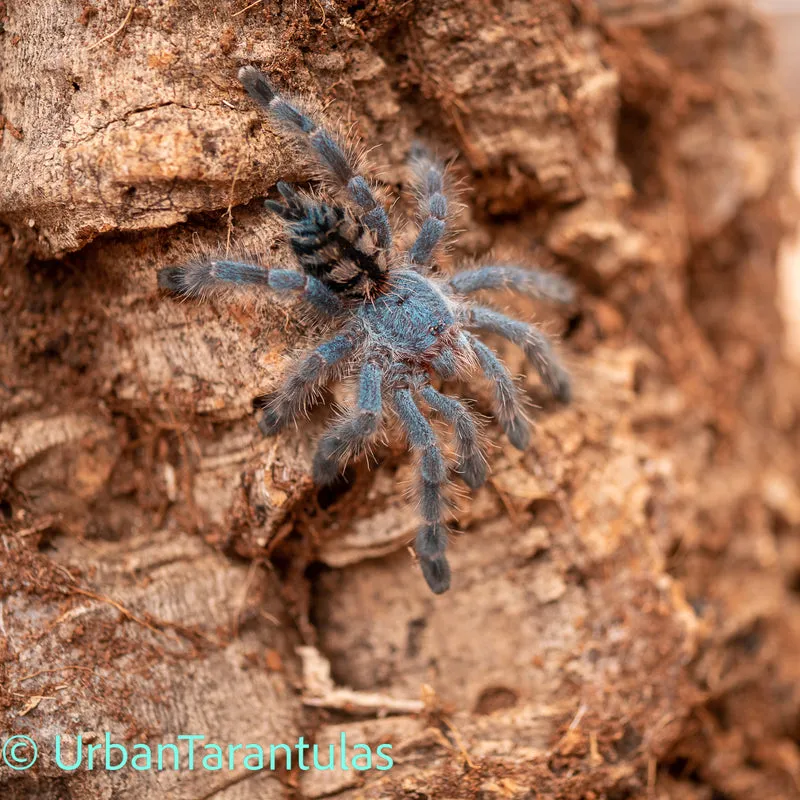
While generally healthy, Versicolor Tarantulas can sometimes suffer from health issues. Common ailments include dehydration, mites, and fungal infections. Dehydration can be prevented by providing a consistent supply of fresh water and maintaining appropriate humidity levels. Mites, which can be detrimental to the spider, are often caused by poor hygiene and can be addressed through cleaning the enclosure and removing contaminated substrate. Fungal infections can occur in overly humid environments; improving ventilation and reducing humidity can help prevent these. If you suspect your tarantula is sick, consult a veterinarian experienced with exotic animals for diagnosis and treatment. Early detection and intervention are crucial for ensuring a positive outcome.
Handling and Interaction
Handling your Versicolor Tarantula is not strictly necessary for its well-being, but if you choose to interact with it, it should be done cautiously and with respect. Understanding the tarantula’s behavior and recognizing signs of stress is crucial for ensuring both your safety and the spider’s. Safe handling practices, such as moving slowly and avoiding sudden movements, will help minimize any potential risks. Always prioritize the spider’s well-being and avoid handling if it seems stressed or agitated.
Safe Handling Practices
If you choose to handle your Versicolor Tarantula, handle it close to the ground or a soft surface. Always move slowly and deliberately to avoid startling the spider. Avoid sudden movements or dropping the tarantula, which can lead to injury. It is best to let the spider walk onto your hand rather than trying to pick it up. Gently coax the tarantula onto your palm, allowing it to explore and move at its own pace. Supervise children closely and teach them how to interact with the tarantula respectfully. Always wash your hands before and after handling to maintain hygiene and prevent the spread of any potential pathogens.
Recognizing Stress Signals
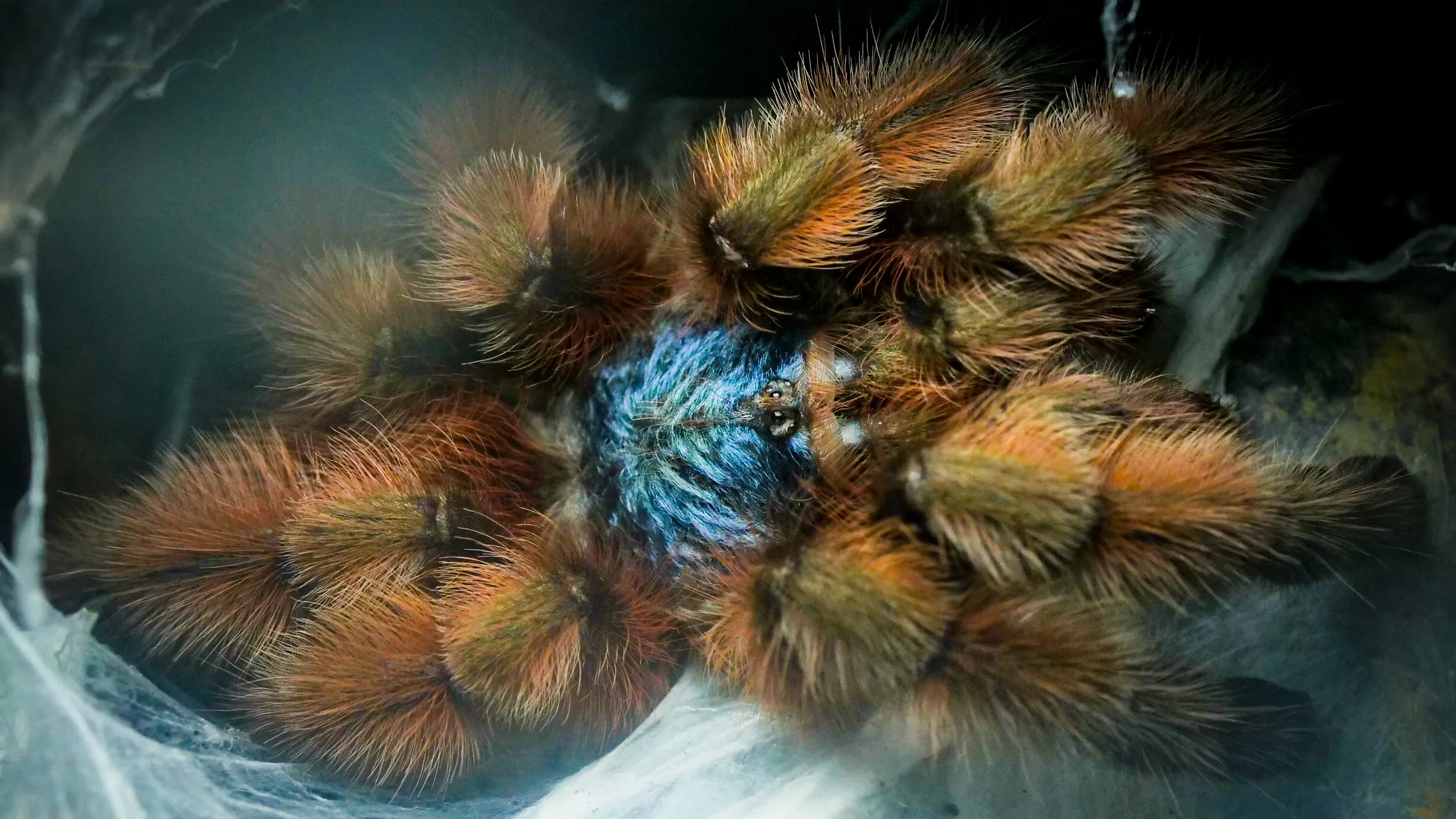
It’s essential to be able to recognize when your Versicolor Tarantula is stressed. Signs of stress include raising its front legs in a defensive posture, flicking hairs (if it has urticating hairs), or attempting to escape. If you see any of these behaviors, it is best to leave the tarantula alone. Avoid handling the spider when it is molting, as it will be particularly vulnerable during this time. Always prioritize the tarantula’s comfort and well-being by avoiding unnecessary stress. By observing their body language and behavior, you can create a positive and safe environment for your pet.
Breeding Versicolor Tarantulas
Breeding Versicolor Tarantulas can be a rewarding experience for experienced keepers, but it requires careful planning and preparation. Understanding the breeding process, from sexing your tarantula to the mating and egg-laying process, is essential for success. Breeding these tarantulas involves various steps, including selecting healthy specimens, creating the right environment, and providing appropriate care for the eggs and spiderlings. Successful breeding requires a significant investment in knowledge, time, and resources.
Sexing Your Tarantula
Before attempting to breed Versicolor Tarantulas, you must determine the sex of your spiders. This is typically done by examining the underside of the tarantula. Males typically have a smaller body and possess tibial hooks on their front legs, which are used to hold the female’s fangs during mating. They also have modified pedipalps, which resemble boxing gloves and are used to store sperm. Females, on the other hand, are generally larger and do not have these features. The most reliable method to determine the sex is to examine the molted exuvium (shed exoskeleton), where the presence or absence of the spermatheca (sperm storage organs) can be determined in females. This can be done by an experienced keeper or with the help of online resources.
The Breeding Process
The breeding process begins by introducing a mature male to a mature female’s enclosure. It is crucial to closely monitor the interaction to prevent the female from attacking and consuming the male. The male will typically display courtship behaviors, such as drumming on the substrate or vibrating his legs. If the female is receptive, she will allow the male to mate. After mating, the male should be removed to prevent him from being attacked. The female will then lay an egg sac, which will contain the fertilized eggs. The egg sac should be removed to an incubator if you want to control the environmental conditions to optimize the chances of success. The spiderlings will hatch in a few weeks and require specialized care, including appropriately sized prey and a suitable environment to thrive. Breeding these tarantulas is a challenging but rewarding endeavor.
Conclusion The Joy of Versicolor Tarantula Care
Caring for a Versicolor Tarantula is a rewarding experience for any arachnid enthusiast. By understanding their unique needs and providing the proper care, you can create an environment where your tarantula can thrive. From creating the perfect habitat to ensuring proper feeding and health maintenance, every aspect of their care contributes to their well-being and your enjoyment as a keeper. The beauty of the Versicolor Tarantula, combined with its relatively docile nature, makes it a fantastic pet. With the knowledge and dedication outlined in this guide, you will be well-equipped to provide the best possible care and experience the joy of watching your stunning Versicolor Tarantula thrive. Remember that patience, observation, and ongoing learning are key to success in the world of tarantula care.
